READY TO GET STARTED?
REQUEST A FREE ESTIMATE
Fill out the form below or call (888) 466-7849 for a free, no-obligation estimate.
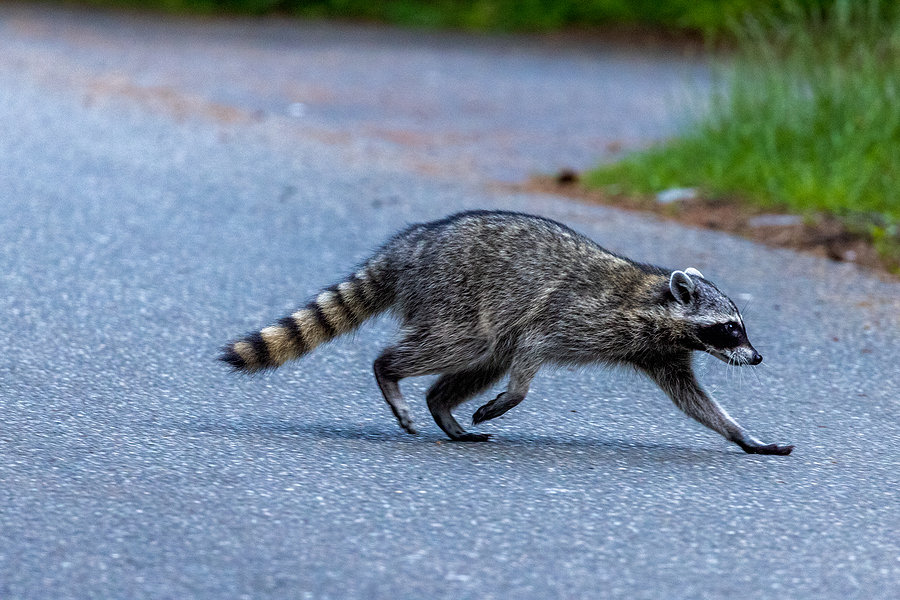
Raccoons are one of the most easily recognizable pests that homeowners deal with. These common wildlife are known for their distinctive black masks over their eyes and ringed tails. Raccoons have gray and black fur and are about the size of an average housecat or small dog. They have 5 fingers on each hand and are extremely coordinated. They are highly intelligent with excellent memories. Raccoons are found in every state of the US.
Raccoons are scavengers and mostly hunt for food at night. They will eat almost anything. They are also highly adaptable allowing them to live in a wide variety of habitats (urban, suburban, rural, forest, mountain, coastal, and more).
When raccoons nest in or near your house they can cause significant damage to both your property and your health. Their damage isn’t just limited to tipped over trashcans. In their search for a nesting site they will rip off shingles, fascia boards, and even chimney vents. Once inside your home, they can destroy insulation, chew through electrical wires, and contaminate your home with urine and feces. They will dig up your yard in search of grubs and even tear off decking to get under porches and decks.
Signs of raccoons on or near your property include:
Getting rid of raccoons can be difficult. They are crafty and can be difficult to trap. Here are some ways to prevent raccoons from taking over your home or yard.
Nearby food sources will attract females to the area to nest and also allow populations to grow rapidly. Eliminating food sources makes your property less attractive to raccoons and other wildlife. Make sure to use heavy trashcans with secure lids. You may consider putting your cans in a rack or tying them to a secure post to prevent tipping. If your lids aren’t secure, use bungee cord or wire to make sure lids are secure. Bring in pet food before nightfall. Try to deter raccoons from bird feeders by using raccoon-proof feeders, hanging from shepherd’s hooks, or bringing them in overnight. Pick up any fallen fruit or nuts from the ground. Consider installing fencing around gardens, ponds, or compost piles. Electric fence is preferable as raccoons can climb over or dig under regular fencing. Don’t intentionally feed raccoons as this will only attract more and increase the population.
Without a place to nest, raccoons will likely move on to a more hospitable environment. Clean up your yard and keep your grass mowed. Remove wood piles and thin out any overgrown shrubbery. Trim branches away from your roof, providing at least a 5′ gap between the roof and any trees. Get rid of any trellises or arbors that may allow access to your roof.
Raccoons like to nest in chimneys so make sure it is sealed when not in use with a chimney cap that is tightly secured. Make sure there are no animals inside your chimney before sealing it off. Inspect the exterior of your home and identify any other possible entry points, as well. Close off spaces under porches, decks, and sheds with wire mesh. Make sure the bottom edge of the wire is buried at least 6 inches deep and extends out at least 12 inches. Make sure to back-cover the wire with soil.
There are several repellents and products designed to scare raccoons with motion and light. Raccoons are highly intelligent and these products will only be effective until they realize there is no threat. Trapping can also be dangerous for homeowners as these nuisance wildlife carry a wide range of parasites and diseases that can be harmful to both humans and pets. Raccoons will bite or scratch if they feel threatened or if they have their young near them. They are known to carry rabies, roundworm, and canine distemper.
If you have an issue with raccoons or any other wildlife, consider contacting a professional pest control company who specializes in wildlife control and wildlife exclusion. They can identify where raccoons may be feeding or nesting and safely and legally trap and relocate them.
Identifying and Controlling Armyworms
How to Bring Your Lawn Back to Life This Spring
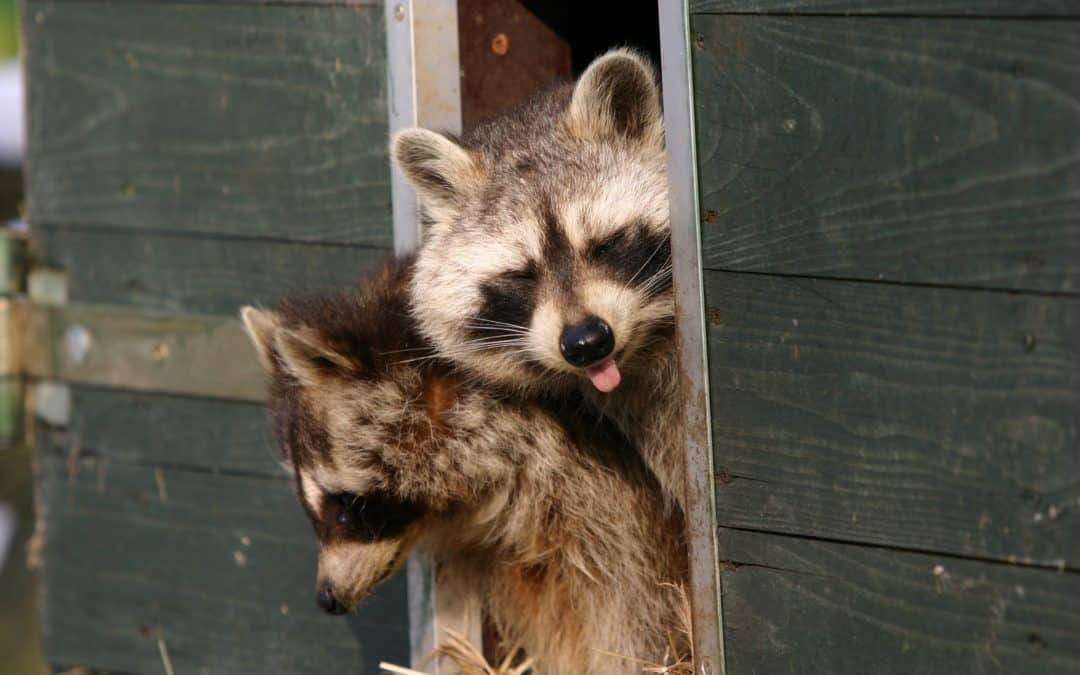
Fall is just around the corner! While we are all eager for that brisk fall breeze to arrive, we know that as the temperatures get cooler, certain wildlife creatures will be more active during the fall season. Wildlife such as squirrels, mice, opossums, and rats are just a few that will start to look indoors for a warm habitat and food source. Before the fall season arrives, every homeowner should start wildlife control preparations early to help prevent these animal intruders from getting inside.
Wildlife animals are constantly in search of food and water to survive. Animals such as opossums and rats often look to garbage cans to find food, making a huge mess in the process. To keep them from scavenging through your trash cans, make sure your garbage isn’t overflowing. Keep your exterior garbage cans secure by locking and sealing the lids overnight.
Raccoons, squirrels, and birds will easily sneak into open gaps or holes leading right into your home. Screen attic vents and openings in chimneys can provide them with ideal openings. Ensure that the vents and chimneys are fully screened and sealed off. Likewise, check around the exterior of your home for any gaps or holes leading inside. Rats and mice only need a small opening to get inside, so ensuring that you’ve sealed any openings can help eliminate the chance of infestation.
Your yard is the first thing that wildlife creatures will enter. Keeping your yard well-maintained can help to prevent these pests from inhabiting. Make sure to clean up leaf piles, brush, and debris throughout the yard. When cleaning up the piles, put them in sealed waste bags and store them in the garage until garbage day. Trim your tree limbs or branches away from your roofline as animals, such as squirrels, will use them as a guide to enter inside the home.
Preventing wildlife from entering your property can be difficult but possible. If you’ve noticed more wildlife creatures than usual, consider calling your professional wildlife control company. These wildlife exclusion experts will inspect your home, identify entry points, safely remove infested animals, and prevent them from entering in the future!
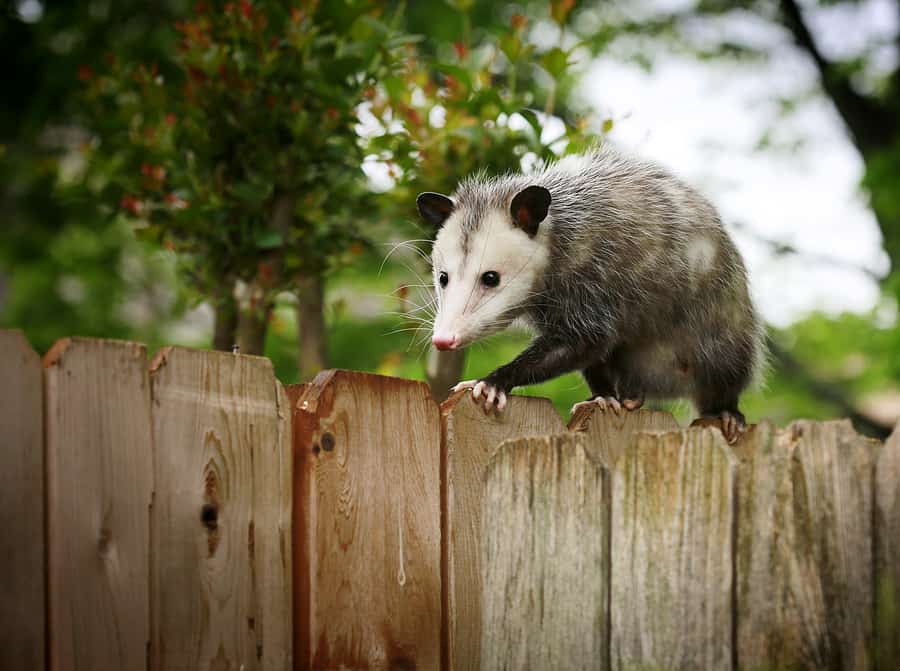
It’s true – many wildlife creatures invade and infest homes during the colder months of the year. However, there are still plenty of pests that are active and looking for a place to inhabit. Knowing which types are prevalent this season and how to prevent them can help you protect your home and family.
Snakes
As coldblooded animals, snakes get their energy from the sun. Because of this, snakes are more active during the warmer months as they require more energy to mate. You’ll typically see snakes out in the early morning and late evenings to avoid the high heat of midday. When they aren’t out, snakes like to hide out in cool, dark places such as underneath rocks and decks. You could also find them hiding out in your basement if they’ve gained access.
To keep nuisance pests from infesting your property it’s important to keep your lawn neat and clean. Clean up any yard clutter, such as piles of leaves and wood. Keep your grass mowed to eliminate coverage and trim bushes and hedges regularly. Always check your garage, garage doors, windows, and exterior doors for gaps and seal any openings.
Opossums
During the spring and summer, opossum females care for their young, meaning they are more active in searching for food to nourish them with. These animals are nocturnal and search for food at night. During the day, possums will hide in trees where they will stay until the evening. While they eat unwanted pests such as snails, cockroaches, spiders, and rats, they also eat garbage, fruit, grass, and roadkill.
To prevent opossums, keeping food from being left out outside your house is crucial. Make sure you bring in pet food and water from outside. Pick up any fruit that might have fallen from trees, including tossing out the rotten ones. It’s equally important to keep your garage doors, pet doors, or unscreened windows closed during the night.
Rats
Rats are active year-round, but the warmer weather provides them with more sources of food. These rodents can reproduce very quickly and controlling them can become difficult once they’ve infested. Rats will typically make burrows before wintertime, building these under buildings, concrete slabs, around lakes and ponds, and even near the garbage. These wildlife creatures can be a risk to humans as they can contaminate food, chew wires causing fire hazards, and their urine and feces can cause health concerns.
Taking necessary precautions before you start seeing rats is the key to preventing them. Check around the exterior of your home and seal up any cracks, crevices, and holes found in the foundation or siding. Remove clutter throughout your garages and storage areas, along with using plastic storage instead of cardboard. Keep your kitchen clean from any crumbs and spills and take your trash out regularly.
If you’ve taken the necessary steps to prevent these common wildlife but are still seeing them, it might be time to call your local pest control company. They’ll be able to assess the wildlife issue and provide you with the best wildlife control and wildlife exclusion options.
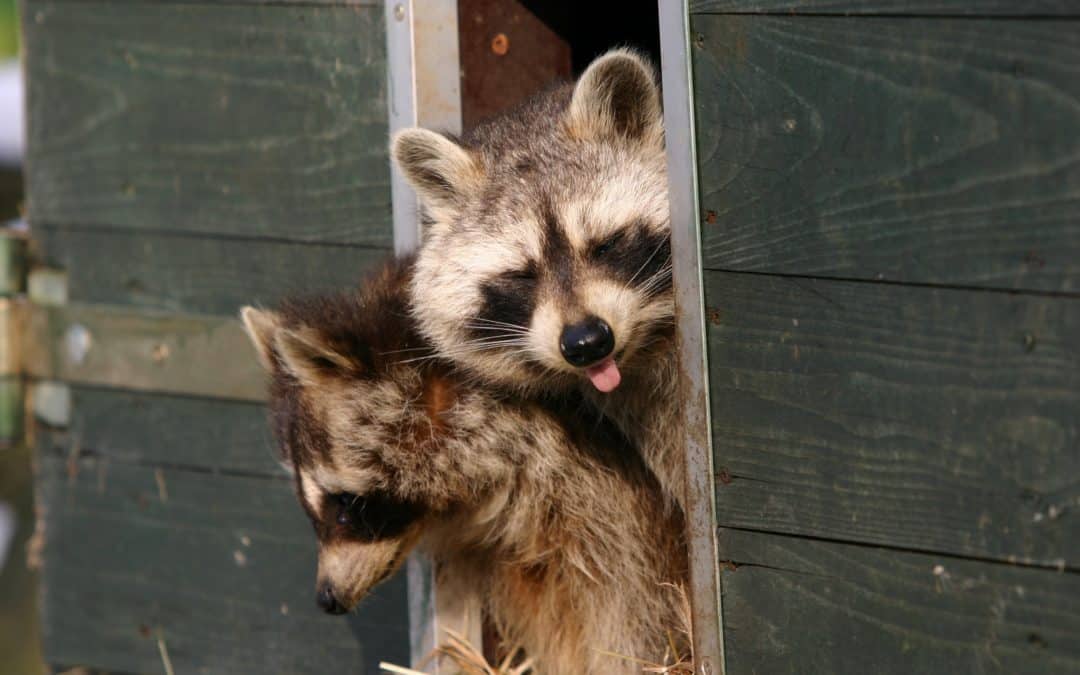
The temperatures have dropped, the warm heat is running throughout the house, and we are all bundled up under a blanket come nightfall. While we enjoy the indoor warmth, the creatures outside could be a bit envious. Most wildlife animals are looking for shelter to keep them warm and provide them with a food source. We breakdown some common wildlife that roam about during the colder months and why they can be harmful to your home and family.
Norway Rats
One common pest encountered in the fall and winter is the Norway rat. These rodents are most active at night, when they begin their search for food and water. They exist in large numbers and are known to produce up to 5 litters per year with an average of 7 babies per litter! If given the opportunity, Norway rats will enter through open holes and gaps leading inside your home. If they gain access, they can be dangerous as they will chew electrical wires, putting you at risk of house fires.
Raccoons
While raccoons can look cute to some, having them destroy your property is not ideal for any homeowner. These animals are talented, capable of using their paws to open doors and lids. They often live in hollowed trees or caves but can also sneak inside the attic and garage to find warmth and food. Once these pests find a food source, they will keep returning to search for more. This can be not only dangerous, as there is potential they could have rabies, but it is also a nuisance as they can cause considerable damage to your roof or inside the home.
Squirrels
Squirrels spend most of their time in trees foraging for food. While these animals might look harmless, they can easily become a threat if they find themselves inside your home. These pests are looking for a food source and will commonly invade bird feeders, garbage cans, and attics. If access is gained into your attic, squirrels can cause damage to the wood, insulation, wires, and even storage boxes. Their urine and droppings can also contaminate attic insulation, which can be extremely costly to replace.
If you suspect that one or more of these wildlife creatures have gotten inside your home, it’s best to contact your local wildlife control company. A professional will be able to locate any entry points, create a customized plan, and prevent them from returning in the future.
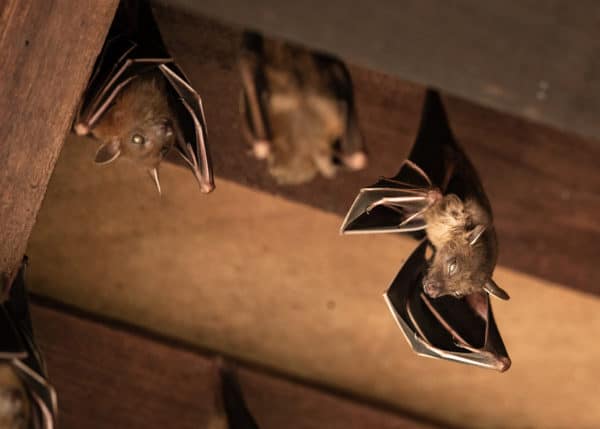
Nuisance wildlife is defined as any type of wild animal that invades a human habitat. This can include squirrels, skunks, opossum, raccoons, moles, voles, groundhogs, birds, bats, snakes, rodents, and more. Anytime a pest gets into your home the potential for damage and contamination is significant. That’s why it’s important to deal with the issue as soon as possible.
There are different ways to handle nuisance pests when they find a way into your home. Extermination involves killing the nuisance pest through the use of traps, toxins, and poisons. While this is generally cheaper and more efficient, the chemicals used can be dangerous for humans, pets, and other non-nuisance wildlife. Wildlife control involves the selective removal of problem populations of certain species of wildlife and usually employs the use of live traps or professional trappers to catch and relocate the nuisance pests to a safer habitat away from humans. This method usually takes longer than extermination and is more expensive. Wildlife exclusion is usually performed as a part of either of these wildlife services and involves preventative measures such as sealing up entry points and habitat modification (which ensures unwanted pests can’t access your property or structures).
Animal control services can be provided by your local government and is usually free although it is often selective in what types of animals they will service. Services provided and cost varies by area and municipality.
A professional wildlife control company will often combine wildlife control, exclusion and/or extermination methods depending on the type of pest you have. Whenever possible, humane control methods such as live removal and relocation are the preferred method of treatment.
Wildlife services typically range from $150 to $500 with the average visit costing between $250 and $250, although it can cost upwards of $1000 depending on what type of pest is involved and how much damage has already been caused. Most wildlife control companies will charge a flat fee or a minimum service fee (usually between $150 and $250), although some will also charge an additional hourly fee per hour after the first hour of service (anywhere from $25/hour to $250/hour depending on the service). This is determined by the type of pest problem, where it is located in the house, and what services are required (removal, exclusion, cleanup, etc). Raccoons and squirrels are usually the most expensive pests to service with an average of $200 to $1500 for a visit depending on the size of the infestation and the amount of damage inflicted. DIY traps can cost anywhere from $50 to $350.
In addition to fees for wildlife control services, damages caused by these nuisance pests is an often overlooked cost that should factor in to the overall budget. The longer you wait to get rid of the pest, the more damage that can occur. Nuisance pests can damage walls, chew through electrical wiring putting you at risk for fires, destroy insulation, and contaminate your home and HVAC system. Repairs for these issues including insulation replacement, wiring repair, drywall repair, duct repair, crawlspace cleaning and repair, and siding repair can be quite expensive and the cost can escalate quickly.
If you have a wildlife issue, contact a professional wildlife control company. A professional technician can inspect your home to determine what type of animal you are dealing with, the extent of the problem and damage, and appropriate ways to treat it. They can also provide you with wildlife exclusion techniques to help prevent repeat issues in the future. Professionals also guarantee their methods and are trained in the proper handling of wildlife, as well as the newest methods and techniques.
Is Mosquito Control Needed In Winter?
Where Did These Ants Come From?